Braving the 12-hour flight from Los Angeles to New Zealand is easy. The hard part? Sorting through the overwhelming number of possibilities crammed into these two islands. That’s why we’re here with 13 must-do adventures for your Kiwi checklist.
1. Make a Plan
The stars aligned. The grandparents agreed to take care of the kids, and my wife and I were free to fly. Two weeks, the two of us, New Zealand. But where to begin? My buddy Kyle scoffed when I asked him what the trip should include. “You need at least a month,” he said. After I compiled a hit list of ideas, I started to think he was right.
A couple of deep breaths and two fingers of bourbon later, I surfaced with some waypoints. We would focus our efforts on the South Island. We needed to see old friends in Nelson, on the northwest tip, and I had become obsessed with mountain biking around Wanaka and sea kayaking in Doubtful Sound, both in the southwest. Now all we needed to do was connect the dots. So we rented a camper van and plotted a road trip for mid-May—late fall in the Southern Hemisphere and New Zealand’s shoulder season, when there are fewer crowds and everything is a bit cheaper.
Our plan took more finagling than I anticipated, and compromises had to be made. (We missed the east side of the island entirely.) But we were able to linger as we poked our way down the moody and rugged west coast, followed locals’ advice on how to find unmarked beaches, spent a leisurely afternoon soaking in the pools on Franz Josef Glacier, and took a side trip to the Lake Hawea sheep station to see where our merino base layers come from.
You may decide that a camper van isn’t for you, and you might want every afternoon planned. That’s OK, too. I felt a lot of emotions cruising around the South Island—mostly bliss and awe, with the occasional surge of terror when I forgot to drive on the left—but FOMO wasn’t one of them. Yes, there’s a lot to do in New Zealand, but you pretty much can’t go wrong.
—Sam Moulton
2. Stay in a Lodge for: Unplugging

Retreats at Aro Ha, a two-year-old lodge set on 21 acres of wilderness in the Southern Alps, are less about indulgence and more about rebooting and connecting with nature. A typical day starts with sunrise yoga followed by breakfast, then a three-to-four-hour hike and a well-earned (and healthy) lunch. Free time allows guests to relax in their timber paneled rooms. In the afternoon, you can take a raw-cooking class; pre-dinner cocktails are replaced with more yoga. After dinner, head to the spa for your daily massage and get your muscles ready to take on another day in the wild. From $3,125 for five days.
—Jen Murphy
3. Hire a Chopper

Because that’s the only way to reach Minaret Station, a 50,000-acre working farm and adventure base in the heart of the Southern Alps. Last year the lodge replaced its original four tents with luxe chalets outfitted with private decks and hot tubs. Once you’ve been whisked the 20 minutes from Queenstown, you’ll heli-ski deep chutes, fly-fish for sea trout where glacier-fed rivers meet the Tasman Sea, or picnic on barbecued crayfish on a beach in otherwise inaccessible Fjordland National Park. From $1,300 per night, all-inclusive; $1,200 for helicopter transfer. —J.M.
4. Mountain-Bike from Tip to Tail
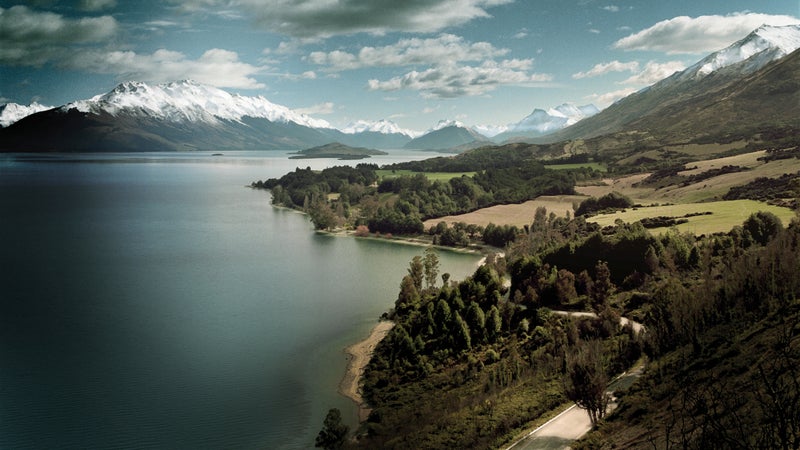
New Zealand’s transformation into one of the world’s great mountain-biking destinations had an unlikely beginning: in 2008, some forward-thinking bureaucrats came up with a plan to build an off-road bike path that would run the length of the country. The New Zealand Cycle Trail, known locally as Nga Haerenga—Maori for “the journeys”—launched in 2015. It’s not a linear system but a collection of 23 segments that include everything from gravel to rugged single-track. Want to see a lot of it? Sign up for February’s Pioneer, a seven-day supported stage race from Christchurch to Queenstown ($3,335 for two). Or take a two-week trip with UK outfitter H&I Adventures (from $3,910). Owner Euan Wilson says the network inspired his new Kiwi excursions. “It’s going to blow people away,” he says.
—Aaron Gulley
5. Explore the New Christchurch
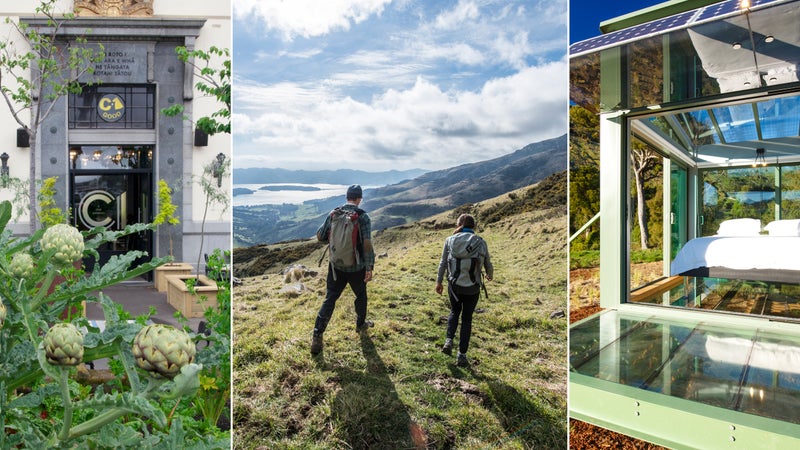
An earthquake devastated Christchurch five years ago, but it also gave this South Island city of 367,000 good reason to reinvent itself as a gateway to the surrounding wilds. Orient yourself with the two-hour Christchurch Rebuild Bike Tour ($50), which showcases Shigeru Ban’s Cardboard Cathedral (yes, it’s made out of paper) and Re:Start, an architecturally striking mall made from repurposed shipping containers that features local food and designers. Then settle in for a late lunch at C1 Espresso, where southern—as in North Carolina—fried chicken is delivered via a pneumatic tube, like in a bank drive-through. Let the food settle on a 35-mile drive south to the town of Little River: you’re headed to the PurePod, a tiny glass-walled cabin, for a night of stargazing ($326).
—Stephanie Pearson
6. Stay in a Lodge for: Food Lovers

Auckland locals take the 35-minute ferry ride to Waiheke just for a meal at the Oyster Inn. The restaurant has a buzzy, Montauk-in-the-Southern-Hemisphere feel. Local gardeners grow the restaurant’s vegetables, fisherman Terry Gallon brings in the day’s catch, and oysters are grown on the island and shucked to order at the bar. The menu changes daily, providing another reason to stick around and book one of the three minimalist rooms. Oneroa Beach is a short walk away, and a little farther are wineries, olive-oil producers, and spots to launch a sea-kayaking or saltwater-fly- fishing expedition. The food is just as good at breakfast, which is available only to overnight guests. From $195. —J.M.
7. Consider the Glowworms
But maybe don’t go see them. The same holds for a lot of classic New Zealand thrill-seeking activities. The country is packed with adrenaline junkies, and it’s hard to escape places to bungee-jump, jet-boat, skydive, and so on. Now, I’ve got nothing against getting scared silly, but it was easy to pass on most of that stuff—it all felt a little Las Vegas. Deciding whether or not to see the famed glowworms was a tougher call. These particular mosquito-size bugs, technically maggots of a fungus gnat, grow only in New Zealand. When conditions are right, they gather in caves to produce an eerie blue-green glow, luring tourists across the country. They’re also Instagram gold. I worried that the experience would be canned and hokey, and the adventure gods must have sensed my ambivalence: when my wife and I arrived, the river was too high to reach the cave. So we went to the Tasman Sea and watched some fur seals. It was mellow, serene, and just what we were looking for. —S.M.
8. Stay in a Lodge for: Families

Sherwood, Queenstown’s newest eco-retreat, feels like a grown-up summer camp. Send the kids out on one of New Zealand’s only dual-slalom mountain-bike courses, then take a workshop on fermented foods or biodynamic wine. In the garden, guests can help harvest fare for the restaurant’s delicious organic dishes, served overlooking Lake Wakatipu. There’s a shared bunk room in the newly renovated lodge, but if that’s taking the camp vibe too far, a two-bedroom suite runs less than $200 per night. Bunks from $60, private rooms from $130. —J.M.
9. Kill Any Rodents You See
Don’t come to New Zealand if you’re looking for cute and fluffy. This otherwise peaceful nation is entrenched in a campaign to rid itself of anything with fur. The islands have virtually no native mammals, but when early settlers arrived they introduced possums, weasels, and rats that thrived at the expense of native birds. And recently things have gotten personal: the portly, flightless kiwi that New Zealanders claim as their national icon is losing up to 95 percent of chicks largely to invasive species. Now the nation is clearing the predators from offshore islands to create refuges for native birds, and even nature lovers are getting in on the action. Herb Christophers, a spokesman for the New Zealand Department of Conservation, proudly introduced a device under development that will lure pests with bait and spray them with a toxin. “Doing nothing is not an option,” he says.
—Cheney Gardner
10. Run the South Island’s Rivers
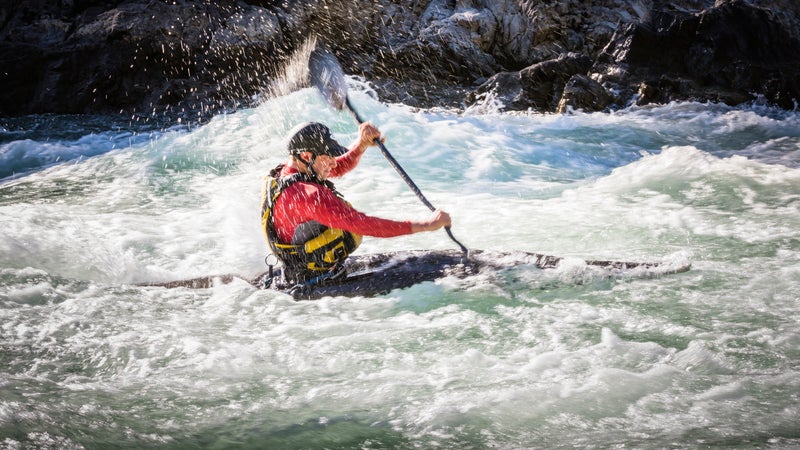
Nearly 400 inches of rain per year produces some of the greatest whitewater on the planet. Stop by the New Zealand Kayak School in Murchison to rent a boat and get the latest river conditions ($45 per day).
- The Class II–III Mararoa River, south of Queenstown, winds four lazy miles through an otherworldly beech forest before hitting a narrow gorge with Class III rapids.
- The Buller, which Kiwi paddling expert Graham Charles calls “simply the greatest kayaking river in the country,” has long Class III wave trains that are suitable for experienced SUPers.
- Kokatahi’s eight-mile stretch of Class IV–V rapids require a helicopter shuttle (and an excess of courage) to run the holes and drops in the turquoise churn of Carnage Gorge. —S.P.
11. Stay in a Lodge for: Anglers
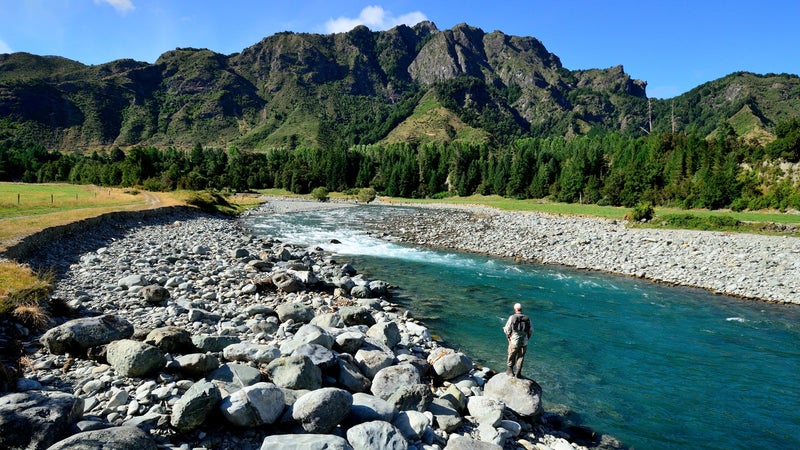
The north side of the South Island has some of the best sighted river fishing on the planet, and Owen River Lodge, 90 minutes from Nelson, is in the middle of it all. Owner Felix Borenstein is a fanatical fisherman with discerning tastes, and he chose the location for its diversity of water, from small spring creeks to large freestone streams with monster fish. The lodge can also arrange heli-fishing trips into Kahurangi National Park, where giant browns eagerly attack dry flies. In the evening, swap tall tales during a nightly four-course dinner washed down with plenty of sauvignon blanc from the neighboring town of Marlborough. From $400. —J.M.
12. Go All In
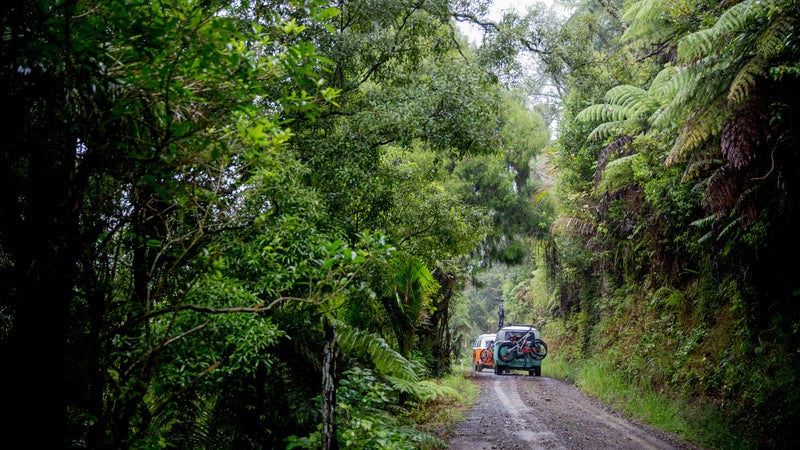
In college, I was studying to be a vintner and skipped a term to intern at a winery on Waiheke, an island near Auckland. During an eventful first week, I weed-whacked the cork tree saplings in the winery’s decorative orchard (oops), hooked up with a coworker in the boss’s bed (ditto), and boxed with a local in a bar (just dumb).
It was clear that I wasn’t cut out for winemaking. So I made for the North Island and bought a van. Auckland’s car market is filled with international travelers pawning used camper vans for cheap. I paid $1,500 for a spray-painted Mitsubishi named Humbug and pointed it south. At the adventure hub of Rotorua, I kayaked 12-foot waterfalls on the Class IV Kaituna and rock-climbed above the shores of Tahoe-like Lake Taupo. Then I hopped a ferry and spent three months on the South Island, where I shared Humbug with a Dutch girl and a Swede headed in the same direction. We harvested green mussels from the bleached beaches of Tasman Able National Park and hiked fjords on the 52-mile Dusky Track in the deep south. Thanksgiving was in the beech forests beneath 9,950-foot Mount Aspiring.
After putting a couple thousand miles on the odometer, it was time to go home. So I sold Humbug for exactly what I paid for it.
13. Stay in Town

Think of Wellington, a city of 204,000 at the bottom of the North Island, as the Southern Hemisphere’s San Francisco. Like that other bay city, there are world-class museums—like the Te Papa’s Maori collection—and a waterfront teeming with sailboats, rowing sculls, and SUPs. Wellington also has endless hiking, trail-running, and mountain-biking options. For a taste of its impressively varied terrain, stay at the Museum Art Hotel on the waterfront next to the Te Papa ($159), then hike the seven-mile Southern Walkway, which traverses high points Mount Victoria and Mount Albert. Back in the city, get grilled fish of the day at Whitebait, an elegant waterfront spot on Clyde Quay Wharf. —S.P.

